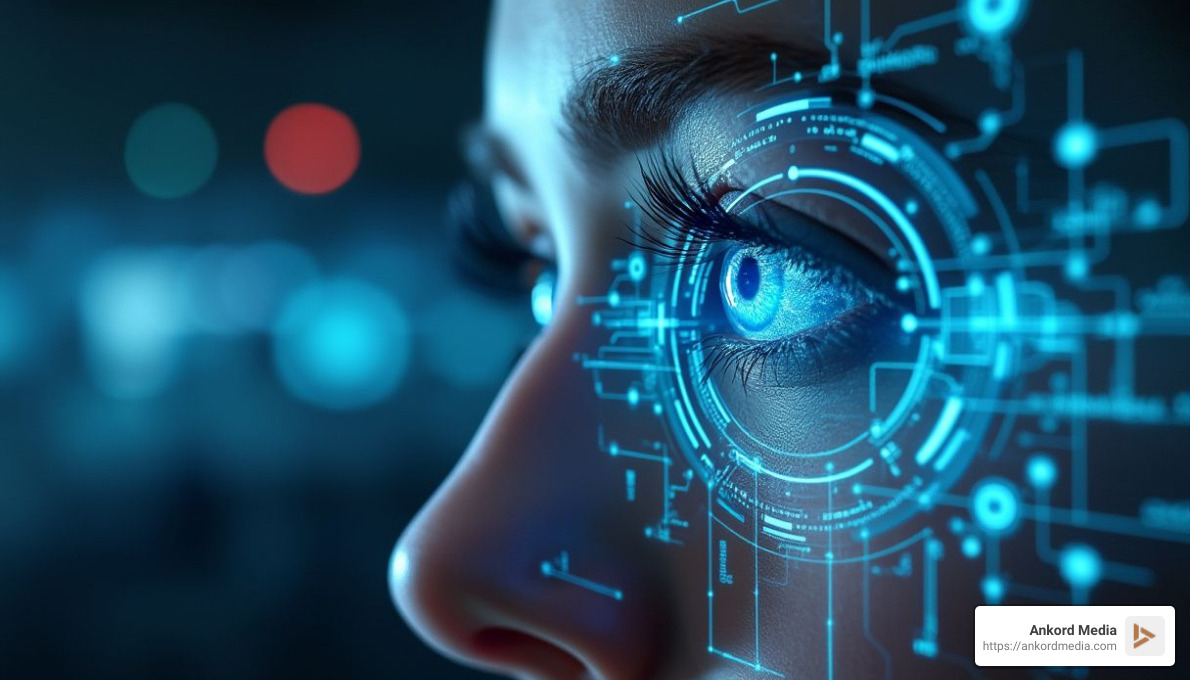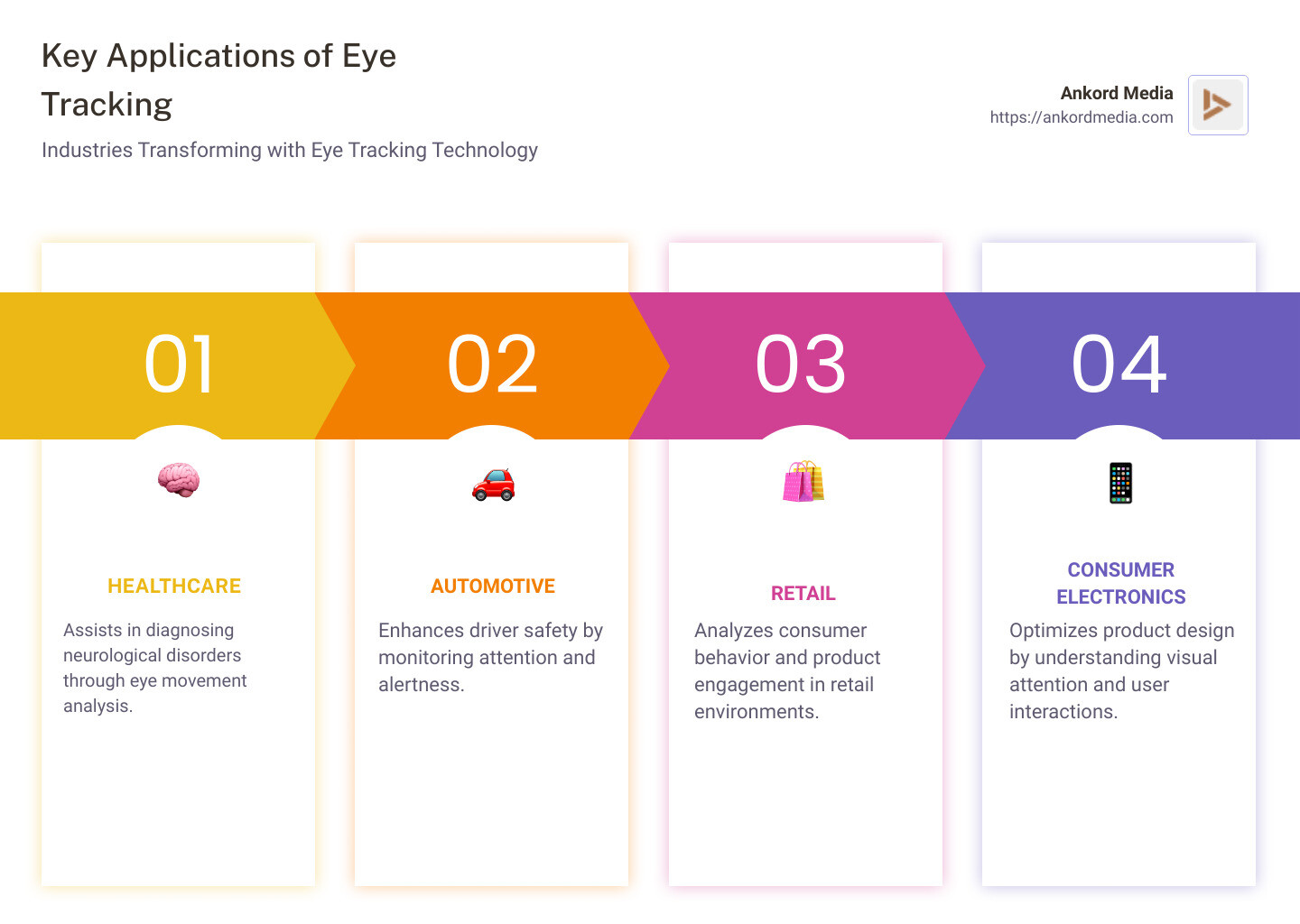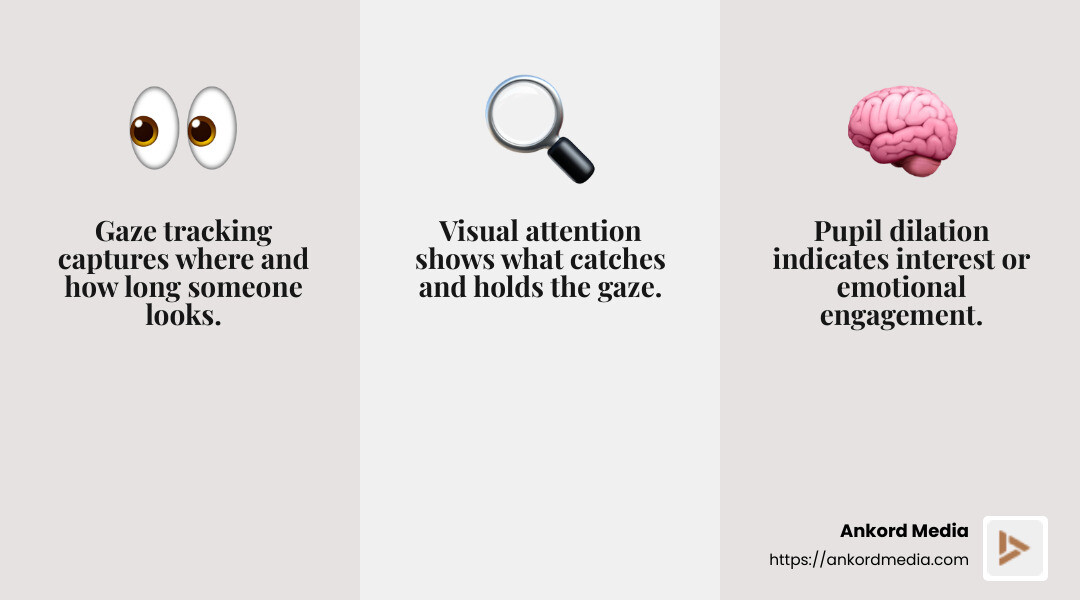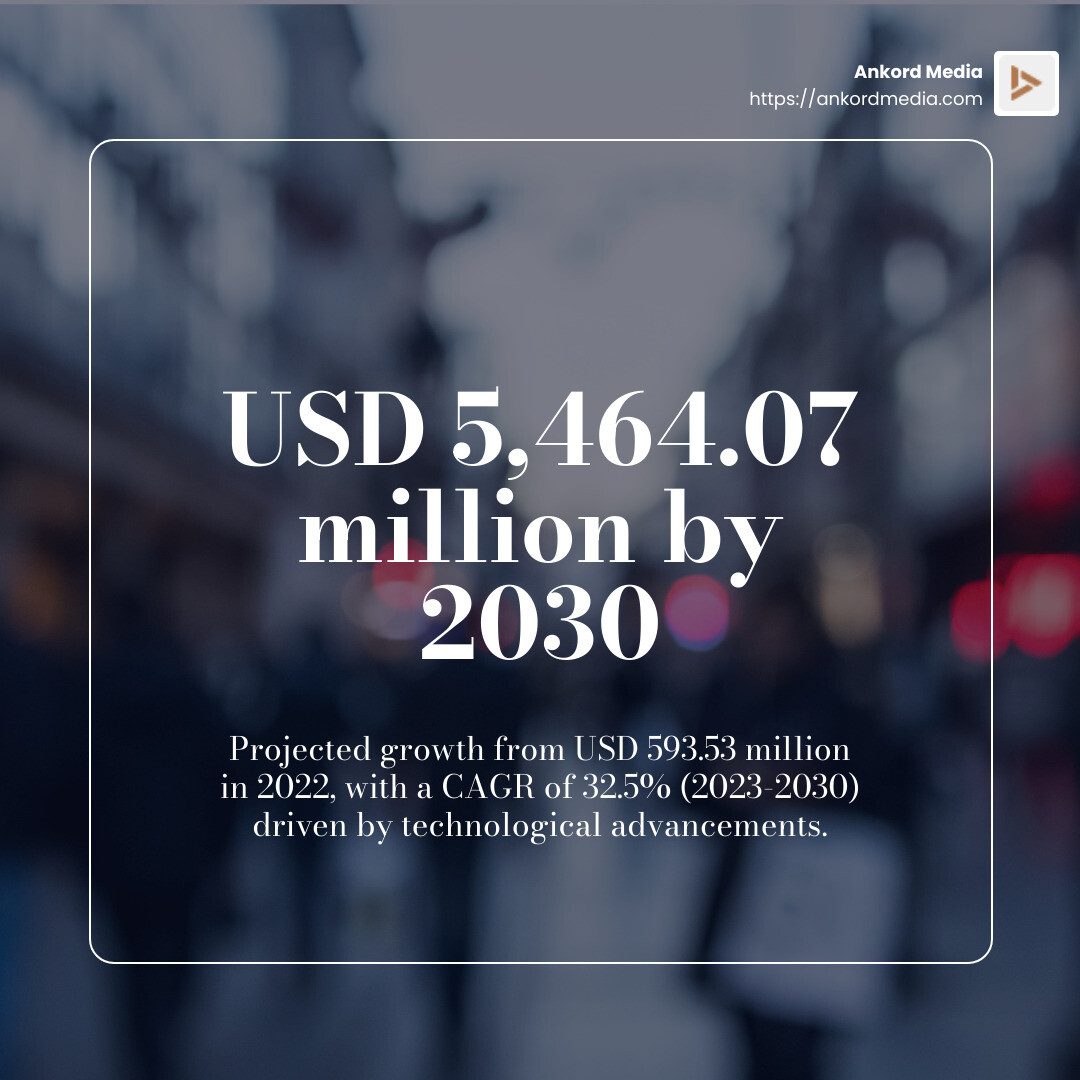Eye Tracking Market Insights: A Visionary Review

Eye tracking market represents a rapidly growing field that is revolutionizing industries from healthcare to consumer electronics. This technology enables the capture of eye movements, providing insights into human behavior and interaction. By observing what people focus on, businesses can improve user experiences and optimize product design. As a result, the eye tracking market is experiencing significant advancements and widespread adoption across various sectors.
- Key Insights:
- Eye tracking technology measures where and how long one looks at various parts of a visual environment.
- Rapid growth driven by the integration into virtual and augmented reality.
- Crucial for industries like healthcare, retail, automotive, and beyond.
Industry applications are vast. In healthcare, eye tracking assists in diagnosing neurological disorders. In retail, it helps understand consumer behavior by analyzing product engagement. Meanwhile, in the automotive world, it improves driver safety by monitoring attention and alertness.
I’m Milan Kordestani, a seasoned entrepreneur with a passion for technology and design. With a strong background in the eye tracking market, I’ve witnessed its changeal impact across industries, magnifying business potential through smart technology integration. In the following sections, we'll explore these exciting applications further.

Eye tracking market terms to know:- b2b tech product marketing- product marketing for technology companies
Understanding Eye Tracking Technology
Eye tracking technology is like a window into the mind. It helps us understand how people interact with the world by following their eye movements. Let's explore three key aspects: gaze tracking, pupil dilation, and visual attention.
Gaze Tracking
Gaze tracking is the core of eye tracking technology. It captures where someone is looking and for how long. Imagine you’re in a store, and your eyes linger on a particular product. Gaze tracking notes this behavior, providing valuable insights into what captures your interest.
Most modern systems use near-infrared light and high-resolution cameras. This setup creates reflections in the eyes, which are then recorded to determine gaze direction. The technology is precise, allowing researchers and businesses to see exactly what draws attention.
Pupil Dilation
Pupil dilation is another fascinating part of eye tracking. When we see something interesting or stimulating, our pupils often dilate. This response can be a goldmine of information for marketers and researchers. For example, if a consumer's pupils widen while viewing an ad, it might indicate strong interest or emotional engagement.
By measuring pupil size changes, businesses can gauge emotional reactions to products, advertisements, or even user interfaces. It's like having a direct line to the viewer's subconscious feelings.
Visual Attention
Visual attention is about what catches and holds our gaze. Eye tracking technology maps out these patterns, showing what people notice first and what they might ignore. This is crucial for designing everything from product packaging to website layouts.
For instance, in digital marketing, understanding visual attention helps optimize ad placements. Marketers can determine which parts of an ad are most effective and adjust their strategies accordingly.

By combining gaze tracking, pupil dilation, and visual attention, eye tracking technology offers a comprehensive view of how we perceive our surroundings. These insights are invaluable across industries, from enhancing user experiences to refining product designs.
In the next section, we'll explore the broader eye tracking market landscape, including its size, growth trends, and emerging opportunities.
The Eye Tracking Market Landscape
The eye tracking market is booming, driven by technological advancements and growing applications across various sectors. Let's break down the market size, growth rate, and industry trends shaping this dynamic landscape.
Market Size and Growth
The global eye tracking market was valued at approximately USD 593.53 million in 2022. It's projected to skyrocket to USD 5,464.07 million by 2030. This impressive growth represents a compound annual growth rate (CAGR) of 32.5% from 2023 to 2030.

This rapid expansion is fueled by increasing demand for eye tracking in industries like healthcare, consumer electronics, and automotive. The technology's ability to improve user experiences and provide detailed behavioral insights makes it a valuable tool for businesses looking to stay competitive.
Industry Trends
Several key trends are driving the eye tracking market forward:
- Technological Advancements: Continuous improvements in hardware and software are making eye tracking more accessible and affordable. Improved precision and reduced costs are opening new avenues for applications.
- Integration with AR/VR: Eye tracking is becoming integral to augmented reality (AR) and virtual reality (VR) experiences. It allows for more immersive interactions by adjusting visuals based on where users are looking.
- Adoption in Automotive: The automotive industry is leveraging eye tracking for driver monitoring systems. By tracking eye movements, these systems can detect drowsiness or distraction, enhancing vehicle safety.
- Retail and Marketing Applications: Retailers and marketers use eye tracking to understand consumer behavior better, optimizing store layouts and digital ads to capture attention effectively.
- Healthcare Innovations: In healthcare, eye tracking aids in diagnostics and treatment plans, especially in neurological and psychological assessments.
Regional Insights
North America leads the market, thanks to the widespread acceptance of smart sensors and biometric systems. The presence of major industry players and technological hubs further accelerates growth in this region.
Meanwhile, the Asia-Pacific region is expected to see significant growth. The rising adoption of eye tracking in consumer electronics and increasing investments in technology research are key contributors.
As the eye tracking market continues to evolve, it presents exciting opportunities for innovation and expansion across multiple sectors. The next section will dig into the key applications of eye tracking, exploring how different industries harness this technology to gain a competitive edge.
Key Applications of Eye Tracking
Eye tracking technology is making waves across multiple industries, offering unique insights and enhancing user experiences. Let's explore how healthcare, automotive, consumer electronics, and retail are leveraging this innovative technology.
Healthcare
In healthcare, eye tracking is a game-changer. It's used for diagnosing and monitoring neurological disorders like Autism Spectrum Disorder (ASD), Parkinson's, and Alzheimer's. By analyzing eye movements, medical professionals can gain insights into a patient's cognitive state and tailor treatment plans accordingly.
Eye tracking also aids in assistive communication, helping individuals with mobility impairments interact with computers using just their gaze. This technology opens up new possibilities for patient care and rehabilitation.
Automotive
The automotive industry is tapping into eye tracking to improve safety and driver experience. Driver Monitoring Systems (DMS) use eye tracking to detect drowsiness or distraction, alerting drivers to stay focused on the road. This technology is crucial in reducing accidents and improving road safety.
Leading car manufacturers are integrating eye tracking into their vehicles. For example, Toyota's Lexus brand and Volvo are using this technology to set new standards in driver safety and comfort.
Consumer Electronics
Eye tracking is becoming a staple in consumer electronics, particularly in gaming and virtual reality (VR). It enables more immersive experiences by allowing users to control devices with their gaze. This technology improves gameplay by adapting to a player's focus and attention.
Moreover, eye tracking is used in smartphones and tablets for accessibility features, making devices more intuitive and user-friendly. As technology advances, we can expect even more applications in personal devices.
Retail
In the retail sector, eye tracking helps businesses understand consumer behavior. By analyzing where customers focus their attention, retailers can optimize store layouts and product placements. This leads to improved customer engagement and increased sales.
Marketers also use eye tracking to assess the effectiveness of advertisements. By measuring gaze patterns, they can determine which elements of an ad capture attention and make necessary adjustments to maximize impact.
These applications highlight the versatility of eye tracking technology. As it continues to evolve, its potential to transform industries and improve user experiences is limitless. Now, let's dive into how eye tracking is reshaping marketing strategies in the next section.
Eye Tracking in Marketing
Eye tracking is changing the game for marketers by offering a deeper understanding of consumer behavior and advertising optimization. Let's explore how this technology is shaping digital media and marketing.
Advertising Optimization
Eye tracking provides valuable insights into how consumers interact with advertisements. By analyzing gaze patterns, marketers can see which parts of an ad capture the most attention and which are ignored. This data helps in tweaking ad elements to boost engagement and effectiveness.
A study by UserZoom found that eye tracking is the most effective tool for identifying usability issues in mobile apps. With precise data, advertisers can optimize their content to ensure it's engaging and impactful. This leads to higher conversion rates and better return on investment.
Understanding Consumer Behavior
Eye tracking sheds light on consumer behavior by revealing what captures a viewer's attention. For instance, in e-commerce, users often focus on product images, descriptions, and prices first. Knowing this, marketers can design their websites and apps to highlight these elements, improving user experience and sales.
In retail settings, eye tracking helps determine which store displays attract the most attention. This information allows retailers to strategically place products and optimize store layouts, enhancing customer engagement.
Impact on Digital Media
Digital media is another area where eye tracking is making a significant impact. It helps marketers understand how users interact with websites and digital content. By tracking eye movements, they can identify which design elements are most effective at drawing attention and communicating information.
For example, eye tracking can reveal which areas of a website are most likely to be viewed, which links are most likely to be clicked, and which parts are often overlooked. This data informs website design to make it more user-friendly and effective.
With eye tracking, marketers can create more engaging and targeted content across digital platforms. This technology is a powerful tool for enhancing user experience and driving better results.
As eye tracking continues to advance, its applications in marketing are set to grow, offering even more opportunities for innovation and improvement. Let's explore the future prospects of this technology in the next section.
Eye Tracking Market: Future Prospects
The future of the eye tracking market is bright, with several exciting developments on the horizon. Let's explore how AR/VR integration, AI advancements, and market expansion are shaping this promising technology.
AR/VR Integration
The integration of eye tracking into AR and VR devices is a game-changer. By tracking where users are looking, these devices can offer more immersive and interactive experiences. For instance, in virtual reality, eye tracking can enable foveated rendering, which improves graphics quality by focusing processing power on what the user is viewing. This not only improves visual fidelity but also reduces the device's overall workload, leading to smoother experiences.
Moreover, eye tracking can transform how we interact with digital environments. Imagine controlling a VR game or navigating a virtual workspace simply by moving your eyes. This level of interaction could redefine user interfaces, making them more intuitive and accessible.
AI Advancements
Artificial Intelligence (AI) is another key player in the future of eye tracking. AI can analyze eye movement data to provide deeper insights into user behavior and preferences. For example, AI algorithms can predict cognitive load and emotional states based on subtle changes in gaze patterns. This information can be used to create adaptive systems that respond to the user's needs in real-time.
In marketing, AI-driven eye tracking can help tailor advertisements to individual viewers, increasing engagement and relevance. By understanding where and how long a user looks at specific content, AI can suggest personalized ad placements that are more likely to capture attention.
Market Expansion
The eye tracking market is ready for significant growth. In 2022, the market was valued at USD 806.8 million, and it is expected to reach USD 8.06 billion by 2030, growing at a CAGR of 33.4%. This rapid expansion is fueled by increasing demand across various sectors, including healthcare, automotive, and consumer electronics.
In healthcare, eye tracking is being used for remote diagnostics and patient monitoring. It offers new ways to track neurological conditions and assess cognitive functions. In automotive, eye tracking systems improve driver safety by monitoring attention and alerting drivers to potential hazards.
The consumer electronics sector is also seeing a surge in eye tracking adoption. Tech giants are integrating this technology into devices to offer more personalized and engaging user experiences. As the technology becomes more affordable and accessible, we can expect even more innovative applications to emerge.
The future of the eye tracking market is full of potential, and these advancements are just the beginning. As we continue to explore new possibilities, eye tracking will undoubtedly play a pivotal role in shaping the way we interact with technology.
In the next section, we'll address some frequently asked questions about eye tracking to further improve your understanding of this fascinating market.
Frequently Asked Questions about the Eye Tracking Market
What is eye tracking in marketing?
Eye tracking in marketing is all about understanding where people look when they see an ad. By tracking eye movements, marketers can see which ad elements catch the viewer's attention. This helps in optimization. For example, if a brand knows which parts of an ad are ignored, they can change it to make it more engaging.
Eye tracking provides insights into viewer attention. This data helps marketers create ads that are not only seen but also remembered. It's a powerful tool for making sure that the right message reaches the right audience.
Why is eye tracking technology expensive?
Eye tracking technology can be pricey due to its need for high accuracy and precision. The technology must capture eye movements with a high sampling rate to ensure that every glance is recorded correctly. This requires advanced hardware and software.
Another factor is the headbox. A headbox is the area in which a user's head can move while still being tracked accurately. A larger headbox means more flexibility for the user but also requires more sophisticated technology.
Does eye tracking technology exist?
Yes, eye tracking technology is very real and widely used. It measures eye movements to provide valuable insights into how people interact with their environment. This technology has a range of applications beyond marketing, including healthcare, gaming, and human-computer interaction.
In healthcare, for example, eye tracking can help diagnose neurological conditions. In gaming, it can improve user experience by allowing players to control games with their eyes. The possibilities are vast and continue to grow as the technology evolves.
In the next section, we'll dig into the conclusion of our review, highlighting how Ankord Media is leveraging these insights to craft strategic branding and digital experiences.
Conclusion
At Ankord Media, we believe in the power of strategic branding and digital experiences. As we've explored throughout this article, the eye tracking market offers incredible insights that can transform how brands connect with their audiences. This technology is not just about tracking eye movements; it's about understanding human behavior and using that knowledge to create more engaging and effective marketing strategies.
Our approach at Ankord Media is to partner with visionary clients who are ready to push boundaries and accept innovation. By integrating cutting-edge technologies like eye tracking, we help brands tell their stories in ways that resonate deeply with their audience. We focus on building authentic customer connections through impactful storytelling and design.
The future of digital marketing is bright, with advancements in AR/VR and AI set to further expand the capabilities of eye tracking. These technologies will allow for even more personalized and immersive brand experiences. At Ankord Media, we're excited to be at the forefront of these developments, continually adapting and evolving to meet the needs of our clients.
If you're looking to lift your brand and create meaningful digital experiences, we invite you to explore our services and see how we can help turn your bold ideas into reality. Together, we can craft a future where your brand not only stands out but truly connects with your audience.

